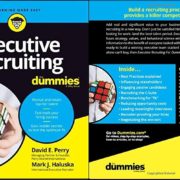What Is Your Next Career Move?
As you begin to think about the type of career transition you want to make, start out by documenting what you already know to be true about your professional self. Pay close attention to your workday for the next two weeks, and take notes about when you’re feeling particularly unmotivated or unenthused about your job. Write down the tasks that bring you down as well as those that get you excited. It may seem like a tedious exercise, but if you stick with it, patterns will start to emerge. And it’s in teasing out these patterns that’ll help you build a picture of the role that’s right for you.
To make the right choice, you have to decide what factors are most important to you in a new job, and then you have to choose the option that best addresses these factors. However, this operates on two levels – on a rational level and on an emotional, “gut” level. You’ll only truly be happy with your decision if these are aligned. This article gives you a framework for analysing your options on both levels.
First, we have to look at things rationally, looking at the job on offer, and also at the things that matter to you. Then, once you’ve understood your options on a rational level, we can start looking at things on an emotional level and think about what your emotions are telling you.
You need to get in touch with your inner self and think about how well the career options fit with your overall sense of self and personal fulfilment. Ask yourself:
- Do I feel like it is the right choice?
- Do I feel positive about the choice?
- Does this choice further my career and life goals?
If something doesn’t feel right, then you need to understand why. Are some factors of over-riding importance? Or are other factors important that are not mentioned? Take the time to make sure that you’re comfortable with your analysis, and that you’re confident that you’ve made the right decision, both on a rational and emotional level.
When you have an option that fits both objectively and subjectively, chances are you’ve got a winning career move.
In order to discover the right choice or choices you will have to follow an organised process in order to increase your chances of making a good decision.
1. Assess Yourself
Before you can choose the right career, you must learn about yourself. Your values, interests, soft skills, and aptitudes, in combination with your personality type, make some occupations a good fit for you and others completely inappropriate.
Use self-assessment tools, and career tests to gather information about your traits and, subsequently, generate a list of occupations that are a good fit based on them. Some people choose to work with a career counsellor or other career development professionals who can help them navigate this process.
2. Identify Your Goals
Identify your long- and short-term goals. This helps to chart a course toward eventually landing work in your chosen field. Long-term goals typically take about three to five years to reach, while you can usually fulfil a short-term goal in six months to three years.
Let the research you did about required education and training be your guide. If you don’t have all the details, do some more research. Once you have all the information you need, set your goals. An example of a long-term goal would be completing your education and training. Short-term goals include applying to college, apprenticeships, other training programs, and internships.
3. Lists of Viable Occupational Options
You probably have multiple lists of occupations in front of you at this point—one generated by each of the self-assessment tools you used. To keep yourself organized, you should combine them into one master list.
First, look for careers that appear on multiple lists and copy them onto a blank page. Title it “Occupations to Explore.” Your self-assessments indicated they are a good fit for you based on several of your traits, so they’re definitely worth exploring.
Next, find any occupations on your lists that appeal to you. They may be careers you know a bit about and want to explore further. Also, include professions about which you don’t know much. You might learn something unexpected.
4. Shortlist
Now you have more information, start to narrow down your list even further. Based on what you learned from your research so far, begin eliminating the careers you don’t want to pursue any further. You should end up with two to five occupations on your “short list.”
If your reasons for finding a career unacceptable are non-negotiable, cross it off your list. Remove everything with duties that don’t appeal to you. Eliminate careers that have weak job outlooks. Get rid of any occupation if you are unable or unwilling to fulfil the educational or other requirements, or if you lack some of the soft skills necessary to succeed in it.
5. Informal Interviews
When you have only a few occupations left on your list, start doing more in-depth research. Arrange to meet with people who work in the occupations in which you are interested. They can provide first-hand knowledge about the careers on your short list. Access your network, including LinkedIn, to find people with whom to have these informational interviews.
6. Deciding which Career to Follow
It can actually be harder to make a decision when you have more jobs to choose from. You may have to juggle multiple job offers, which can be stressful.
Don’t say “yes” right away. Take the time to evaluate each offer and to carefully compare employee benefit packages. It’s not all about the money—the benefits and perks you’re being offered are important too, and some perks can be negotiated in a job offer.
Don’t rush into a decision. Take the time to carefully consider all options. Forget about the ones you didn’t take once your decision is made; instead, focus on the future and get ready to start your new job.
Careers evolve over time, so instead of stressing about getting your trajectory exactly right, focus on setting yourself up to make an informed decision about what to pursue. Building a career is a process, and understanding that is a part of succeeding.
Given our current situation knowing that your colleagues or employees are best suited for this new scenario we find ourselves in. Finding the right talent, the best fit for the job and your organisation can be a very challenging task. It is now important to find out whether your managers or your team is well-equipped of working together from various locations. It requires deep knowledge of their personalities, strengths, weaknesses, interests, work style and other characteristics. Our technology and solutions will do the work for you, helping you discover if your people are resilient during times of hardship, if they are autonomous, if they are team players, without actual human contact. Given that our platform is cloud-based, everyone can use it from home as well. Humanity finds itself at a crossroad for various reasons now, why not help people discover and develop themselves from the comfort of their own homes?
Request a free demo:

Sources:
https://hbr.org/podcast/2021/02/choosing-whats-next-for-my-career
https://www.forbes.com/sites/glassheel/2016/10/11/6-questions-to-define-your-next-career-move/?sh=768e7e95386c
https://www.themuse.com/advice/4-moves-to-make-if-you-still-have-no-idea-what-you-want-to-be-when-you-grow-up











